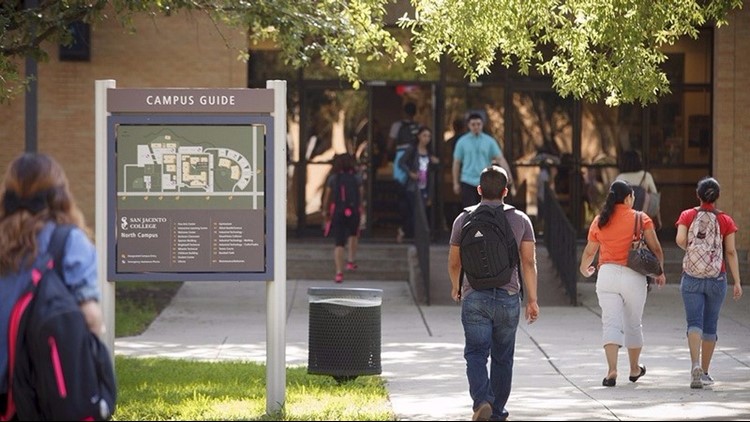TEXAS, USA — This article was originally published by our content partners at the Texas Tribune. Read the original article here.
Distance from a community college is a key factor for students when deciding what to do after high school — and can lead them to leave their hometowns for college or not to pursue a degree at all, a recent study found.
Black, Hispanic and low-income students are more likely to forgo college altogether when they are not close to a community college, which can have long-term effects on their earnings.
Living far from a community college, in contrast, often nudges White, Asian and higher-income students to enroll in a four-year university instead, the study found.
The research study, released last month by the Annenberg Institute at Brown University, looked at Texas students who graduated from a public high school between 2013 and 2017, tracked those who enrolled at a Texas public college and monitored their progress toward getting a degree. The researchers zeroed in on those living in community college “deserts,” or places where students’ public high schools were more than a 30-minute drive from the nearest community college.
Black and Hispanic students face unique barriers in going to and completing college. They are more likely to have caretaking responsibilities that often lead them to stay at home. Those who enroll are often the first in their families to attend college.
Access to transportation also plays a big role when students are making plans for life after high school. The cost of gas and car payments can increase the financial burden of attending college — and can be enough to make high school students decide not to pursue a degree or college students to drop out, said Riley Acton, a researcher with Miami University in Ohio.
“We do in this country provide transportation to children up through grade 12. And then when it gets to the post-secondary level, students generally are on their own for transportation,” Acton said.
The COVID-19 pandemic spurred the expansion of online learning, changing what higher education looks like in Texas. The researchers said it’s unclear to what extent remote learning can help improve access to higher education in community college deserts like rural areas. Students can take remote classes to avoid long commutes but they often struggle with limited access to reliable broadband and tools like a reliable laptop, Acton said.
The report’s findings also underscored the damage school closures can have on students’ college plans. That’s particularly relevant in Texas after lawmakers overhauled the state’s funding system for community colleges last year to provide a lifeline to many small or rural colleges struggling to stay open.
“Policymakers can and do change where college campuses are located, either through opening new campuses, merging campuses, etc.,” Acton said. “Our results suggest that expanding community college options in historically underserved areas — [like] lower income areas, areas with large black and Hispanic populations — could be a really good and potentially cost-effective way to expand access to higher education in Texas.”



